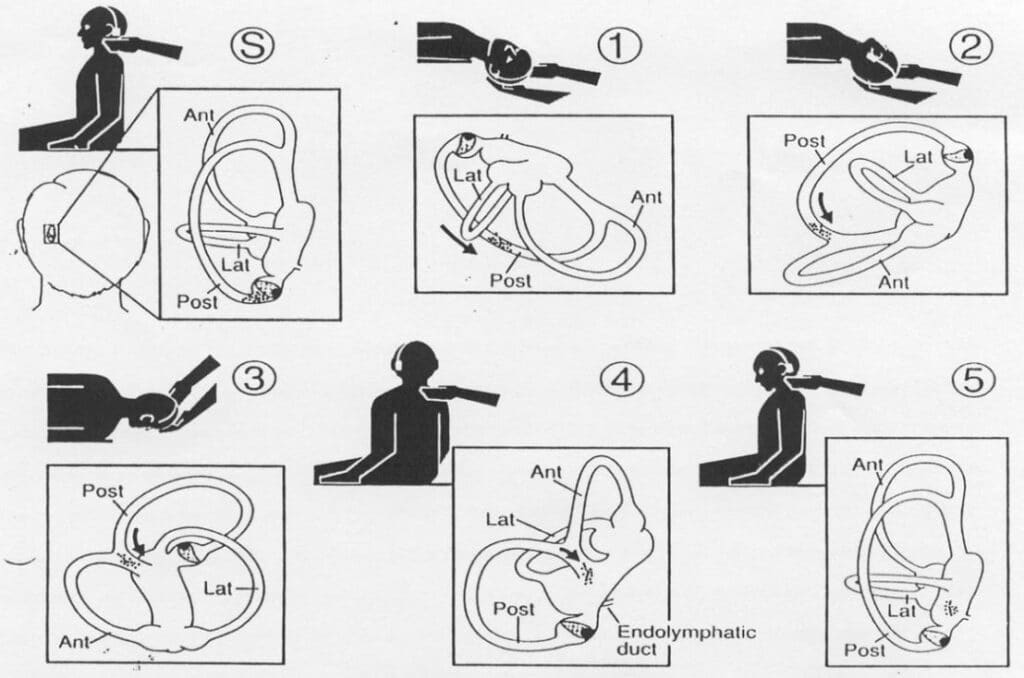The Epley maneuver (or canalith repositioning) has historically been described as involving four positions, with the Dix-Hallpike test being position #1. Position #2 involves having the patient roll their head away from the affected side. Position #3 continues in the same direction to the nose down position, and position #4 involves bringing the patient back up into the sitting position.

Studies have shown that performing the Epley maneuver more than one time increases the chances of success. Under the best of circumstances, there is still a minority of patients that do not respond to the Epley maneuver and require a return visit for additional treatment. (read here about a modified Epley Maneuver)
Over the years, I have tried to keep track of the details of each repositioning maneuver with the following recording sheet. Each of the four circles is used to document the patient’s subjective (dizziness) and objective (nystagmus) response in each position, #1 through #4. I use a + to indicate a positive response, and a – to indicate a negative response.
Below the circle, I will make a short note if anything unexpected occurs, such as unexpected direction of nystagmus.
———–Position #1 #2 #3 #4
CRP #1 Dizziness OOOO
———-Nystagmus OOOO
CRP #2 Dizziness OOOO
———–Nystagmus OOOO
CRP 3# Dizziness OOOO
———Nystagmus OOOO
Photo courtesy John Epley, 1999.







